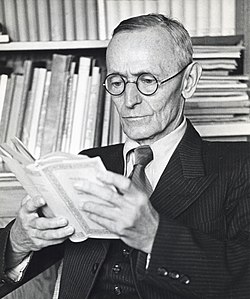Hermann Hesse Quote
What is meditation? What is leaving one's body? What is fasting? What is holding one's breath? It is fleeing from the self, it is a short escape of the agony of being a self, it is a short numbing of the senses against the pain and the pointlessness of life. The same escape, the same short numbing is what the driver of an ox-cart finds in the inn, drinking a few bowls of rice-wine or fermented coconut-milk. Then he won't feel his self any more, then he won't feel the pains of life any more, then he finds a short numbing of the senses. When he falls asleep over his bowl of rice-wine, he'll find the same what Siddhartha and Govinda find when they escape their bodies through long exercises, staying in the non-self. This is how it is, oh Govinda.
What is meditation? What is leaving one's body? What is fasting? What is holding one's breath? It is fleeing from the self, it is a short escape of the agony of being a self, it is a short numbing of the senses against the pain and the pointlessness of life. The same escape, the same short numbing is what the driver of an ox-cart finds in the inn, drinking a few bowls of rice-wine or fermented coconut-milk. Then he won't feel his self any more, then he won't feel the pains of life any more, then he finds a short numbing of the senses. When he falls asleep over his bowl of rice-wine, he'll find the same what Siddhartha and Govinda find when they escape their bodies through long exercises, staying in the non-self. This is how it is, oh Govinda.
Related Quotes
About Hermann Hesse
As a youth, he studied briefly at a seminary, struggled with bouts of depression and even once attempted suicide, which temporarily landed him in a sanatorium. Hesse eventually completed Gymnasium and passed his examinations in 1893, when his formal education ended. However, he remained an autodidact and voraciously read theological treatises, Greek mythology, Johann Wolfgang von Goethe, Gotthold Ephraim Lessing, Friedrich Schiller, and Friedrich Nietzsche. His first works of poetry and prose were being published in the 1890s and early 1900s with his first novel, Peter Camenzind, appearing in 1904.
His interest in Eastern religious, spiritual, and philosophical traditions, combined with his involvement with Jungian analysis, helped to shape his literary work. His best-known works include: Demian, Steppenwolf, Siddhartha, Narcissus and Goldmund, and The Glass Bead Game, each of which explores an individual's search for authenticity, self-knowledge, and spirituality. In 1946, he received the Nobel Prize in Literature.
